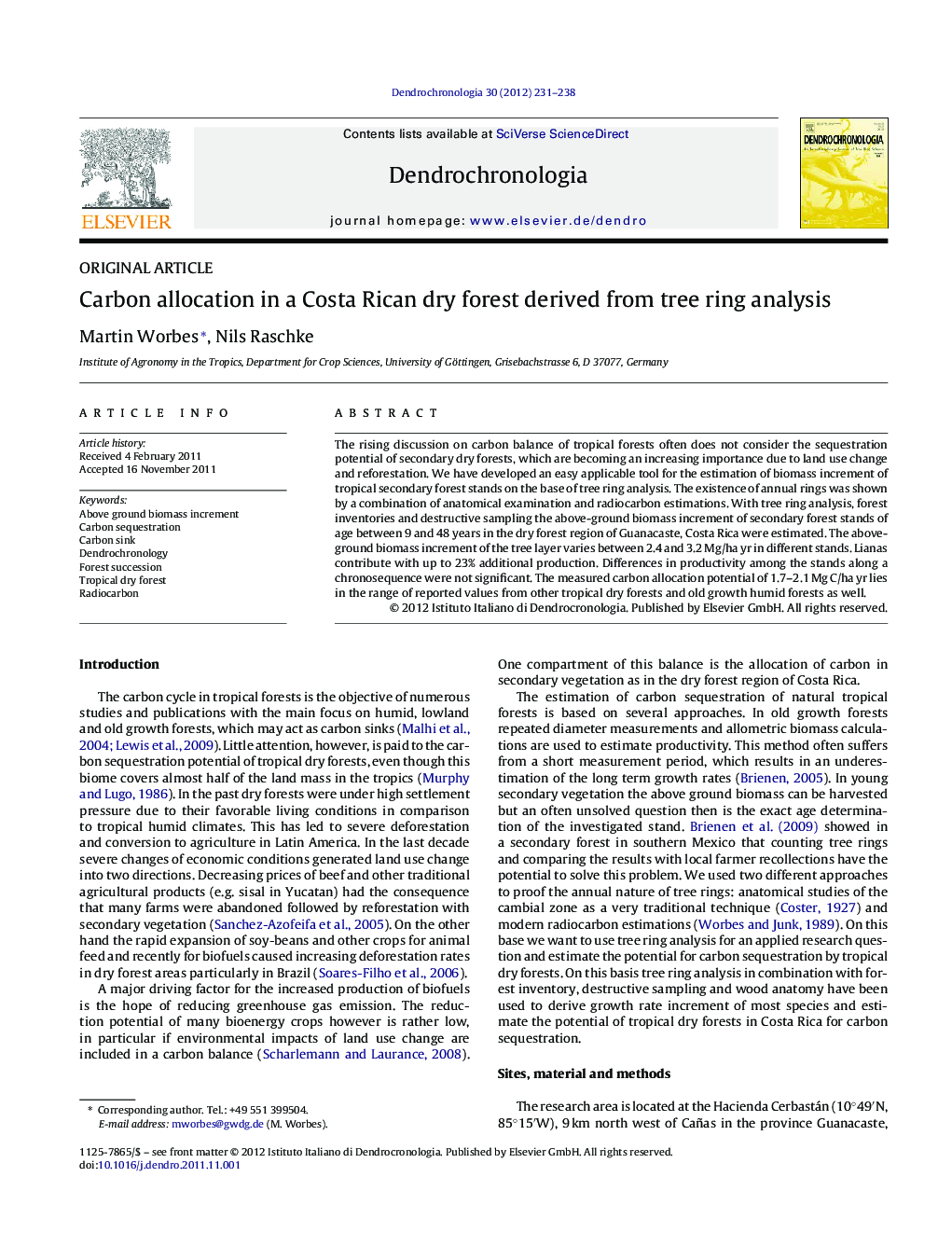| Article ID | Journal | Published Year | Pages | File Type |
|---|---|---|---|---|
| 85707 | Dendrochronologia | 2012 | 8 Pages |
The rising discussion on carbon balance of tropical forests often does not consider the sequestration potential of secondary dry forests, which are becoming an increasing importance due to land use change and reforestation. We have developed an easy applicable tool for the estimation of biomass increment of tropical secondary forest stands on the base of tree ring analysis. The existence of annual rings was shown by a combination of anatomical examination and radiocarbon estimations. With tree ring analysis, forest inventories and destructive sampling the above-ground biomass increment of secondary forest stands of age between 9 and 48 years in the dry forest region of Guanacaste, Costa Rica were estimated. The above-ground biomass increment of the tree layer varies between 2.4 and 3.2 Mg/ha yr in different stands. Lianas contribute with up to 23% additional production. Differences in productivity among the stands along a chronosequence were not significant. The measured carbon allocation potential of 1.7–2.1 Mg C/ha yr lies in the range of reported values from other tropical dry forests and old growth humid forests as well.
